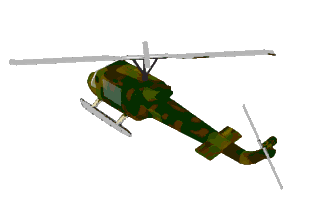
Flying a helicopter
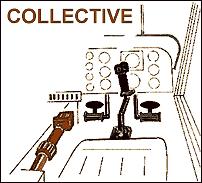 | This is a control which is only found in helicopters and is linked to the engine power. Moving this up and down changes the pitch of the main rotors. As the pitch is increased more power is required from the engines so that the rotor speed is kept at the same level. | |
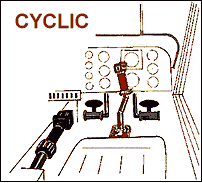 | Moving it forward or back will point the nose of the helicopter up or down. It does this by varying the angle of the rotor blades as they go round, tilting the rotor back and forth. When moved left or right the rotor tilts in that direction and the helicopter banks and rolls. | |
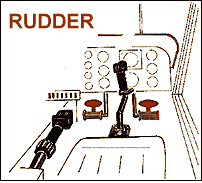 |
Pilot Skills

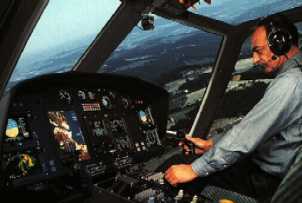
Two types of panels:
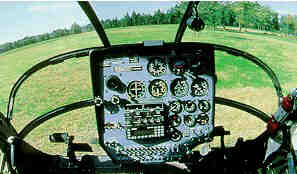
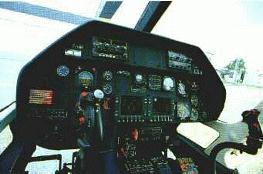
How the Helicopter Flies ...
Contribution: Sikorsky Aircraft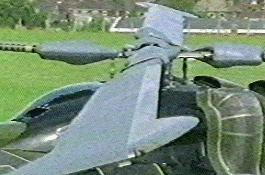 |
To Climb, the angle or pitch of the blades is increased. To descend, the pitch of the blades is decreased. Because all blades are acting simultaneously, or collectively, this is known as collective pitch .
For forward, backward and sideways flight an additional change of pitch is provided. By this means the pitch of each blade increases at the same selected point in its circular pathway. This is the cyclic pitch .
With these two controls in mind let us make an imaginary flight. With the engine warmed up and the rotor blades whirling above us in flat pitch, that is, with no angle or bite in the air, we are ready to start.
We increase the collective pitch. The rotor blades bite into the air, each to the same degree, and lift the helicopter vertically.
Now we decide to fly forward. We still have collective pitch to hold us in the air and we adjust the cyclic pitch so that as each blade passes over the tail of the helicopter, it has more bite on the air than when it passes over the nose. Naturally the helicopter travels forward.
Now we decide to stop and hover motionless so we put the cyclic pitch in neutral, the rotor blades now have the same pitch throughout their cycle, and the collective pitch holds the helicopter suspended in space without moving in any direction.
In short, it is the cyclic and collective pitch which gives the helicopter its unique ability to fly forward, backwards, sideways, rise and descend vertically and hover motionless in the air ,
making it one of the most versatile vehicles known by man .
No comments:
Post a Comment